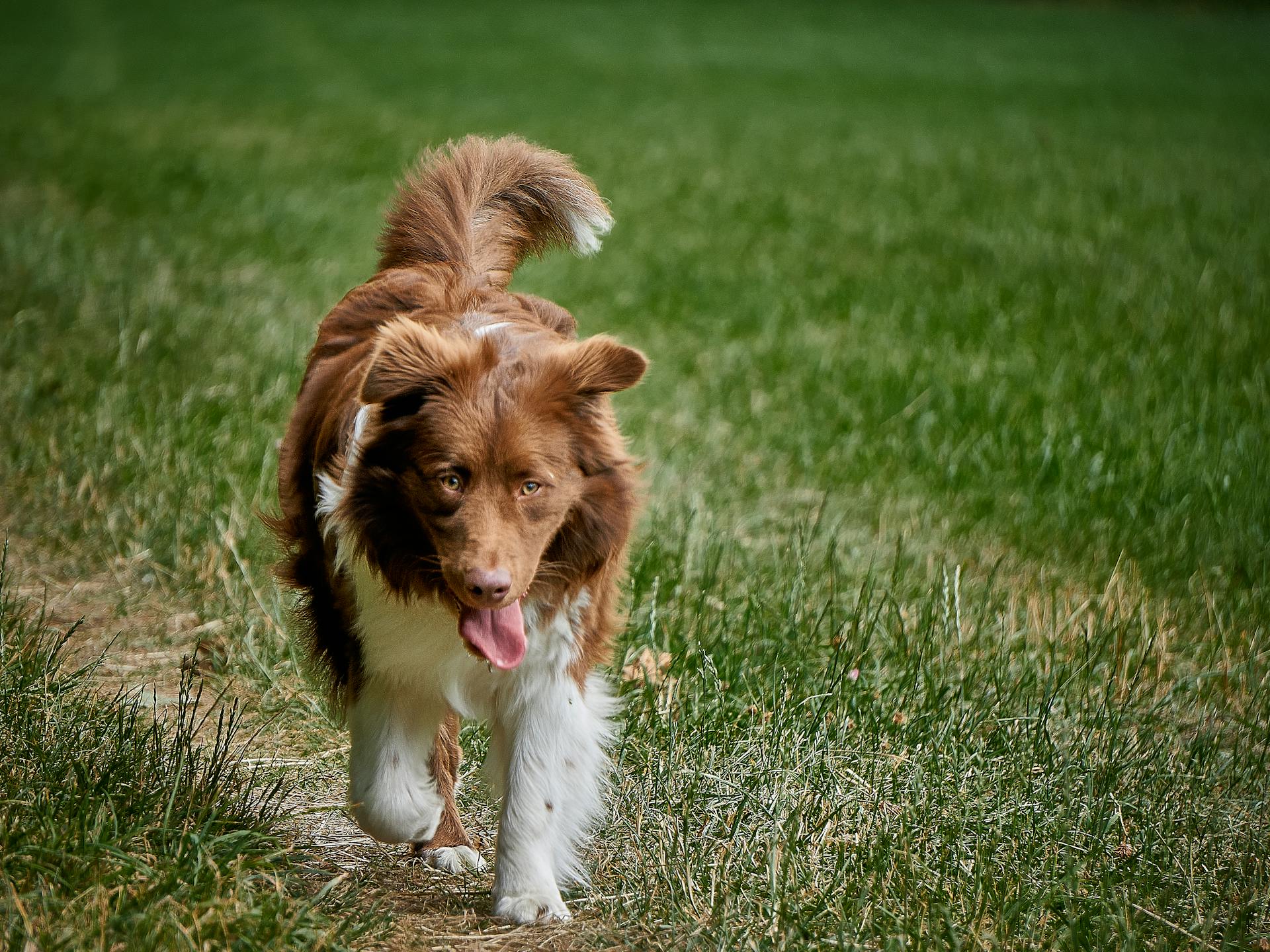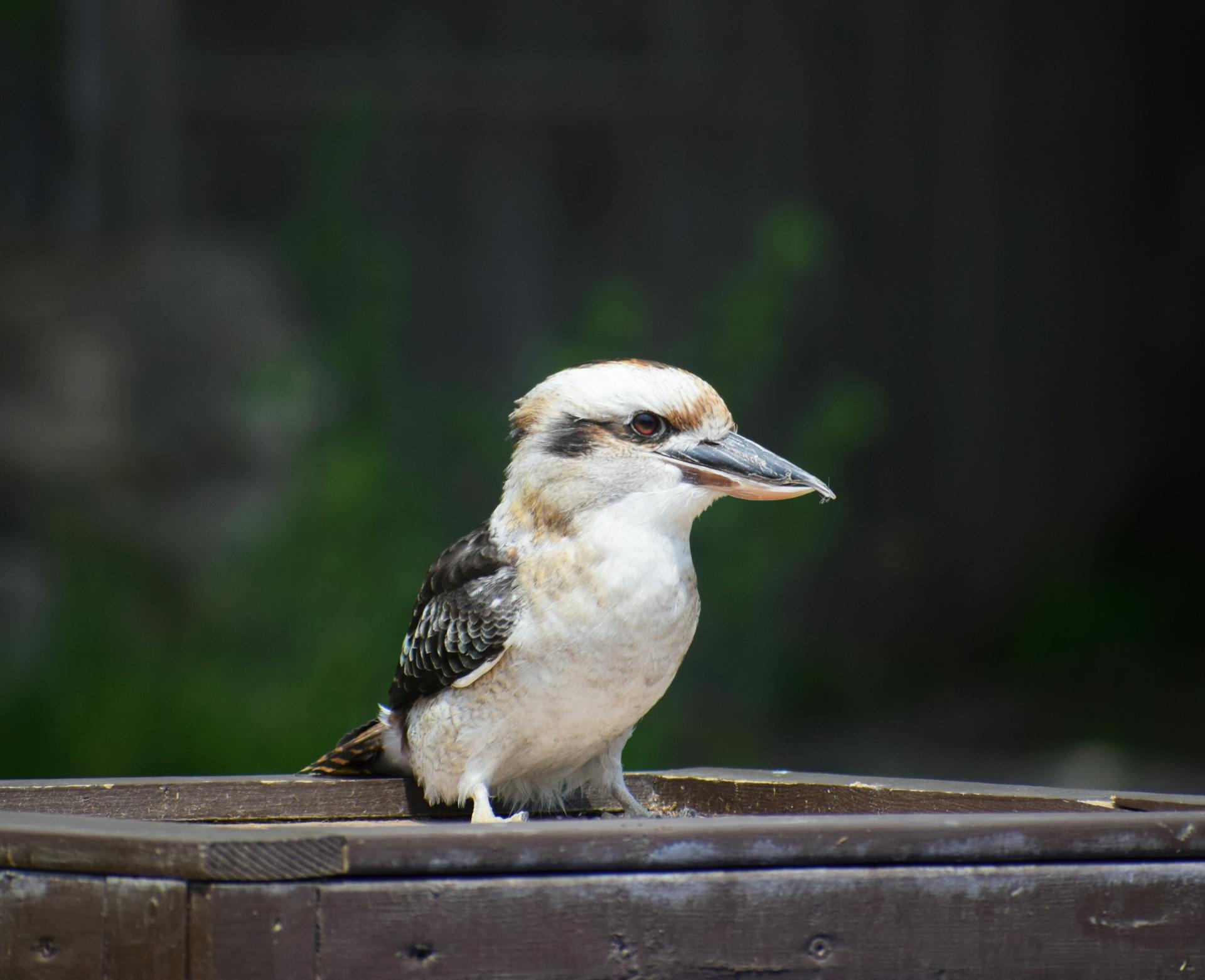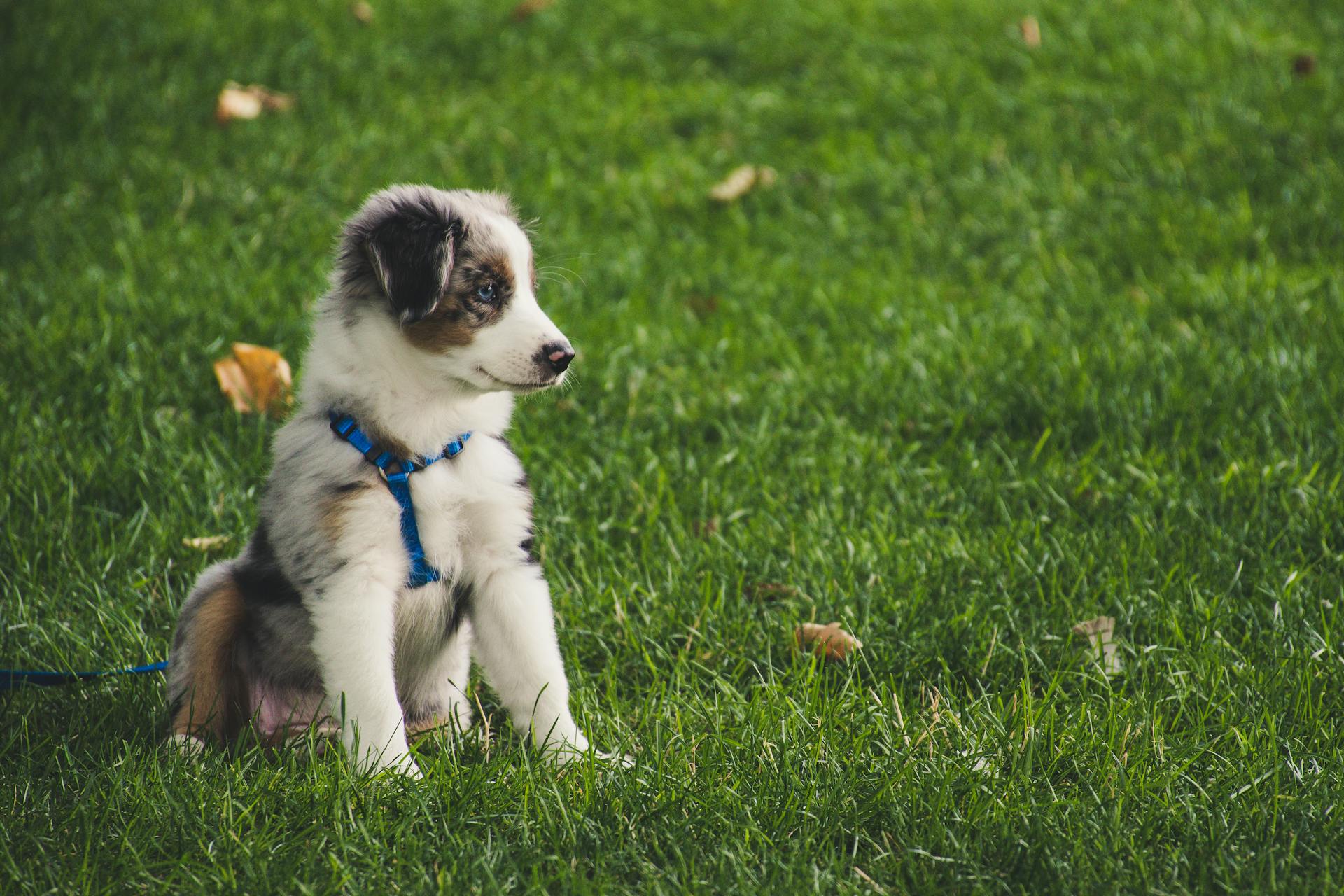
The Australian Shepherd Blue Heeler Mix is a unique and intriguing breed. This crossbreed combines the intelligence and agility of an Australian Shepherd with the toughness and loyalty of a Blue Heeler.
Australian Shepherds are highly intelligent dogs, ranking among the top 10 smartest breeds. They excel in obedience training and are often used as working dogs on farms and ranches.
Blue Heelers, on the other hand, are known for their strong herding instincts and high energy levels. They require regular exercise and mental stimulation to prevent boredom and destructive behavior.
A mix of these two breeds can result in a dog that is highly intelligent, energetic, and loyal.
Characteristics of the
The Australian Shepherd Blue Heeler is a high-energy dog that requires a lot of physical and mental activity. They are bred to work all day, so expect your dog to be similar in terms of energy levels.
Their intelligence is one of their best qualities, making them highly trainable with positive reinforcement. They can learn quickly and pick up cues from their master.
With a strong herding instinct, they may try to herd strangers, small children, or other pets, so it's essential to discourage this behavior immediately. They can also be pushy and use their teeth to move their "herd" along.
A Texas Heeler's coat is medium in length and can come in various colors, including black, blue, fawn, blue merle, or blue ticked. They shed moderately, and their grooming needs are relatively light.
Their eyes are usually brown, and their nose is a pointed black. They can have erect or folded ears, and their tails can be straight or bobbed. White or tan trim can be found on their feet and legs.
This breed is loyal and loving, sticking to their family like glue and showering them in doggy kisses. They are also protective of their family and may be uncomfortable with strangers.
Here's a quick rundown of the breed's characteristics:
New Owners Friendly
Their high energy level and strong herding instinct make them an excellent watchdog, but they may not be the best fit for households with noise level restrictions.
Care and Maintenance
Taking care of your Australian Shepherd Blue Heeler is relatively easy, but it does require some regular maintenance to keep them looking and feeling their best. Brushing their coat is a must, and you can get away with doing it every couple of weeks if your dog has inherited the short fur of its Blue Heeler parent.
However, if your dog has gained the slightly longer coat of its Australian Shepherd parent, you'll need to brush it at least once a week. During shedding season, you'll need to up the frequency to remove the dead hair and prevent it from spreading all over your home.
You'll also need to check your dog's ears and brush their teeth regularly to keep them in top condition. If you walk your dog frequently, their nails should wear down naturally and won't need to be trimmed as often.
Here are some potential health issues to be aware of:
- Progressive Retinal Atrophy
- Hip Dysplasia
- Elbow Dysplasia
- Deafness
- Epilepsy
- Cataracts
- Collie eye anomaly
- Collie nose
- Drug sensitivities
Exercise
The Texas Heeler is a high-energy dog that thrives on physical and mental exercise. It's almost impossible to over-exercise this breed.
A daily commitment of at least two hours of physical exercise is a must. If you can't commit to that, this dog may not be the best fit for you.
Mental exercise is also essential to keep your Texas Heeler content. They are intelligent dogs that are happiest with a job to do.
Agility, obedience, flyball, or scent work are great sports to help keep your dog busy and mentally engaged. These activities will provide them with the mental stimulation they crave.
A thirty-minute walk about twice a day will also keep your dog happy and exercised. However, they'll truly love freely running outdoors.
They'll enjoy participating in activities like flyball and agility exercises. They were born to herd, so they'll appreciate any job that involves herding.
Trips to dog parks where they can socialize with other canines are also a great idea. They'll love hiking on any type of terrain and appreciate any kind of outdoor family activity.
To keep your Texas Heeler happy and healthy, aim for at least 14 miles of required mileage per week.
Explore further: Newborn Texas Heeler Puppies
Grooming
Grooming is a crucial part of caring for your Blue Heeler Australian Shepherd mix. Regular brushing is essential to prevent matting or tangling of the coat, and should be done at least once a week.
The frequency of brushing may vary depending on the length of your dog's coat, but even if your dog has inherited the slightly longer coat of its Australian Shepherd parent, it still doesn't need much more than brushing once a week. This will help remove dead hair and prevent it from spreading all over your home.
You'll also need to check your dog's ears regularly, especially if they have folded ears, which require cleaning with damp cotton balls once a week. Brushing their teeth two or three times a week is also recommended to prevent bad breath and the build-up of tartar.
Trimming their nails should be done every two weeks if they don't naturally wear them down, and bathing should only be done as necessary. If you're not confident with how to groom your pet, you can always visit a pet salon for professional help.
On a similar theme: Blue Heeler as a Pet
Here are some health issues to be aware of in your Blue Heeler Australian Shepherd mix:
- Progressive Retinal Atrophy
- Hip Dysplasia
- Elbow Dysplasia
- Deafness
- Epilepsy
- Cataracts
- Collie eye anomaly
- Collie nose
- Drug sensitivities
During times of heavy shedding, such as spring, you'll need to brush your dog more frequently to remove the hair. An undercoat rake or comb will do the best job at this time.
Health and Nutrition
The Blue Heeler Australian Shepherd mix is a robust dog, but like any breed, it can be prone to certain health issues. Both the Blue Heeler and Australian Shepherd are robust dogs, but there are a few potential health concerns that can affect this cross-breed.
A Blue Heeler crossbred with Australian Shepherd can expect to live for 12 to 15 years, which is a decent lifespan. Despite the long list of potential health concerns, if you invite a Texas Heeler into your life, you can expect to share it with them for twelve to fifteen years.
To keep your Blue Heeler Australian Shepherd mix healthy, it's essential to provide proper nutrition. Being such active dogs, they need a diet that's high in calories to keep up with their active lifestyles. Most commercial dog food diets will have an adequate balance of nutrients for dogs who spend most of their time as companions.
Expand your knowledge: Origin of Blue Heeler Cattle Dog
Here are some of the best dry dog foods for an active Blue Heeler Australian Shepherd mix:
- Wellness Core Air Dried Dog Food
- Taste of the Wild High Prairie Canine Formula with Roasted Bison and Roasted Venison
- Canidae Grain-Free Pure
It's worth noting that these brands are just suggestions by experts, and the proper diet for your dog will depend on its physical characteristics, health condition, and genetic upbringing.
Return
The Australian Shepherd's high energy level requires a lot of exercise and mental stimulation to prevent boredom and destructive behavior.
This breed needs at least an hour of physical activity and playtime daily, which can be achieved through a combination of walks, runs, and playtime in the yard or park.
Their intelligence and work-oriented nature make them thrive on tasks and activities that challenge their minds, such as agility training, obedience training, and interactive puzzle toys.
Aussies are also prone to health issues like hip dysplasia and eye problems, so regular veterinary check-ups and a balanced diet are crucial to maintaining their overall health.
Their strong herding instinct can sometimes manifest as herding behavior around family members, so it's essential to provide them with plenty of exercise and mental stimulation to redirect this energy.
Additional reading: Blue Heeler Behavior Problems
Diet and Nutrition
As you care for your Blue Heeler Australian Shepherd mix, providing the right diet and nutrition is crucial for their overall health and well-being. Blue heelers are active dogs that require a balanced diet to keep up with their energetic lifestyle.
Most commercial dog food diets have an adequate balance of nutrients for companion dogs, but if your blue heeler is a working dog or spends hours sprinting and running, they may benefit from performance diets. Look for foods with added glucosamine and chondroitin to promote healthy joints.
It's essential to ensure your dog is taking in enough calories to maintain their active lifestyle. A diet rich in nutrients, vitamins, and minerals will help support their overall health. As they age, you may find it beneficial to switch to a canned food diet or soak their kibble before feeding it to them.
Some excellent dry dog food options for active breeds include Wellness Core Air Dried Dog Food, Taste of the Wild High Prairie Canine Formula, and Canidae Grain-Free Pure. These brands offer a balanced mix of nutrients and are suitable for breeds like the Blue Heeler Australian Shepherd mix.
Intriguing read: Blue Heeler Health Issues
Here are some key ingredients to look for in your dog's diet:
- Glucosamine and chondroitin to support joint health
- Probiotics for easier digestion
- Nutrients, vitamins, and minerals for overall health
- Grain-free or low-carb options for easier digestion
Remember to consult with your veterinarian to determine the best diet plan for your dog based on their physical characteristics, health condition, and genetic upbringing.
Cons
Blue heelers require intense mental and physical stimulation to prevent boredom and destructive behavior. If they don't get enough exercise, they can become restless and anxious.
They have a strong desire to be with their owner at all times, which can make them unhappy if left behind. This is especially true if they're not provided with adequate mental and physical stimulation.
Blue heelers can be stubborn, making training a challenge. Consistency and patience are key when working with these intelligent dogs.
Training and Family
The Australian Shepherd Blue Heeler is a highly intelligent breed that responds well to training. They can learn new tasks and tricks with ease, making them a great companion for active families.
To train your Australian Shepherd Blue Heeler, it's essential to start with early socialization to help them get used to children and other pets. This will prevent any potential conflicts later on.
Positive reinforcement is key when training this breed, so be sure to reward them with treats and praise during training sessions. This will help them associate good behavior with positive outcomes.
Teaching basic obedience commands is a must for any dog, and the Australian Shepherd Blue Heeler is no exception. Here are some essential commands to get started:
- Teach them to "come" by starting at smaller distances and increasing the gap little by little each session.
- Teach them to walk on a "loose-leash" by training them to walk politely at your side without pulling their leash too much.
- Teach them to "sit" using methods like "capturing" and "luring."
- Teach them to "stay" by having them remain in their place until you give them a release cue.
- Teach them to "lay down" by training them to remain in a down position until you give them a release cue.
Despite their intelligence, the Australian Shepherd Blue Heeler can become stubborn at times, so it's essential to exhibit strong leadership and be consistent with training. With patience and positive reinforcement, you can help your dog become a well-behaved and loyal companion.
Research and Purchase
Researching a reputable breeder is crucial when looking for an Australian Shepherd Blue Heeler mix. This involves carefully evaluating the breeder's credentials and asking the right questions.
To start, research breeders for at least a few months to ensure they're not part of a backyard breeder operation or puppy mill. This will give you time to gather information and make an informed decision.
A trusted breeder will have the dog's best interest in mind and not overbreed the features of the parent breeds. They will also provide you with the proper documents of the hybrid as well as the parent breeds.
Before meeting with a breeder, research the breed to know what kind of questions to ask. This will help you understand the usual demeanor of the dog, proper training routines, and basic needs.
If you decide to purchase online, look for reputable sites that offer many breeds of puppies. However, be wary of breeders who cannot show you the proper documents of the parent breed, especially the health records.
Consulting a veterinarian is also essential to understand the health issues in both parent breeds. For example, Australian Shepherds have a lifespan of 12-15 years but can develop heritable diseases like eye problems and lymphoma.
Frequently Asked Questions
Are blue heelers and Australian Shepherds the same dog?
No, Blue Heelers and Australian Shepherds are two distinct breeds with different origins and characteristics. While they share some similarities, they have unique differences in size, weight, and appearance.
How big do aussie heelers get?
Aussie Heelers typically stand 17 to 20 inches tall and weigh 35 to 50 pounds. Their sturdy build makes them a medium-sized dog breed.
Are Australian heelers good dogs?
Australian Cattle Dogs, also known as Australian Heelers, make excellent companions for active families due to their loyalty and high energy levels. However, they do require regular exercise and training to channel their herding instincts.
How much is a blue merle Australian Shepherd worth?
A blue merle Australian Shepherd's price ranges from $300 to $2000, influenced by breeder reputation and health screenings. Learn more about factors affecting the cost of this breed.
Are Australian Blue Heelers good family dogs?
Australian Blue Heelers are known for their friendly nature, making them a great fit for families. They are generally considered a solid choice for families with children.
Sources
- https://www.caninejournal.com/australian-shepherd-blue-heeler-mix/
- https://www.practicalpaw.com/blue-heeler-australian-shepherd-mix/
- https://www.dailypaws.com/dogs-puppies/dog-breeds/australian-shepherd-mixes
- https://www.alphapaw.com/dog-breeds/australian-shepherd-blue-heeler-mix/
- https://www.thesprucepets.com/blue-heeler-4176567
Featured Images: pexels.com


